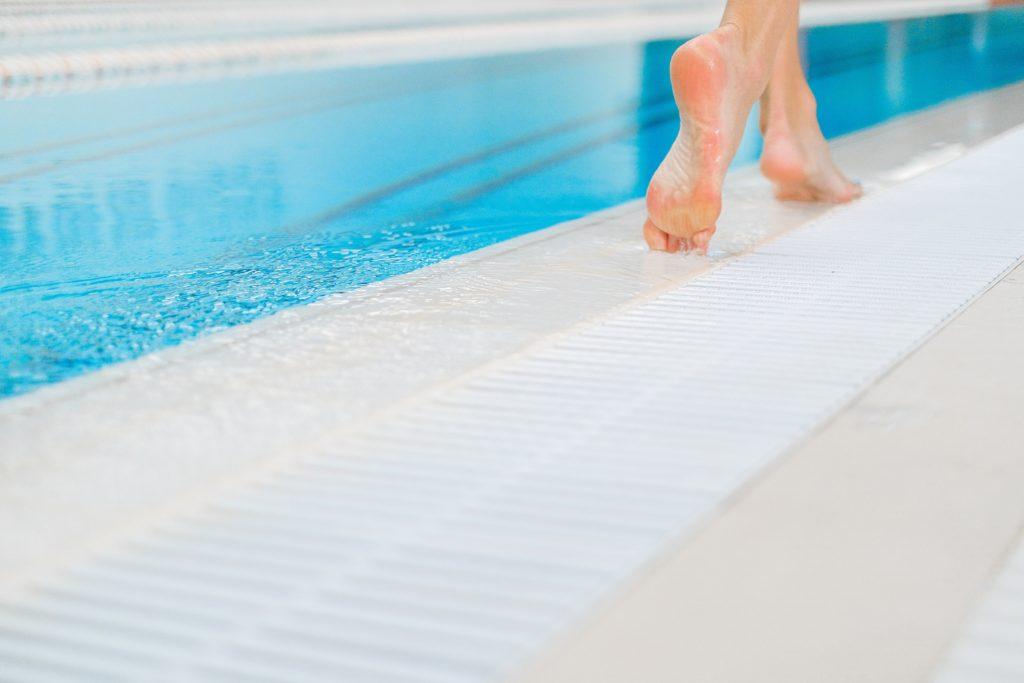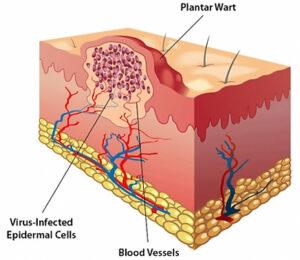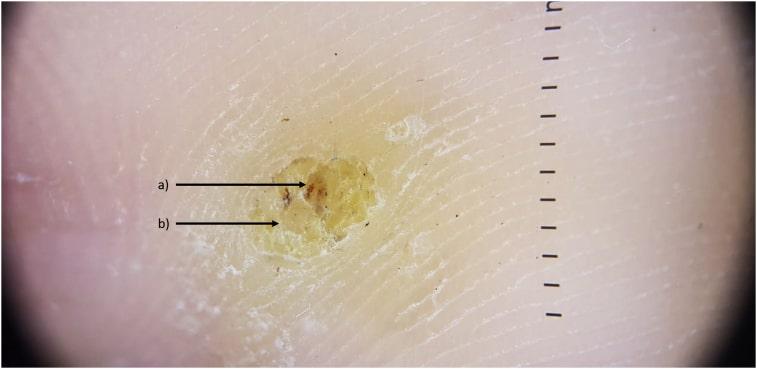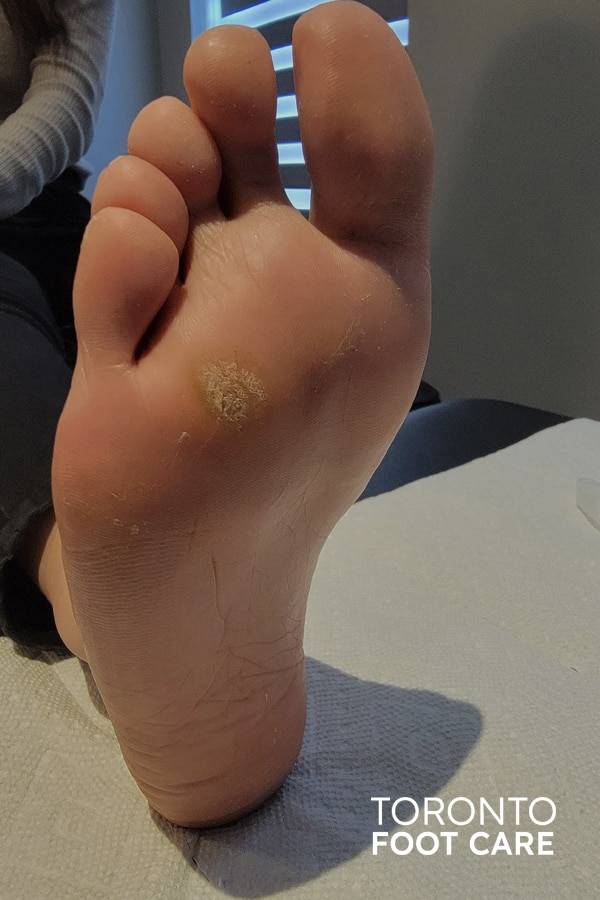Plantar Warts | Verrucae Pedis
A plantar wart, also known as verrucae pedis, is a viral infection caused by the Human Papilloma Virus (HPV) affecting the soles of the feet. It’s frequently misidentified as corns or calluses due to the protective layers of skin, making over-the-counter medications less effective as they only penetrate the outer skin layers. Despite some plantar warts disappearing spontaneously within a year and may not be painful at first, untreated cases may lead to clusters or spread to other people. Immediate treatment is advisable even if it is a small wart.
While plantar warts commonly manifest on the soles, they can emerge on any skin surface. Contracted in warm and moist environments such as swimming pools, locker rooms, change rooms, and communal showers, or areas where walking barefoot is common, understanding the transmission sources is crucial for prevention.
Explore our website for in-depth insights into effective treatment methods, prevention strategies, and expert guidance on removing and treating plantar warts. Stay informed and take proactive steps to address plantar warts for optimal foot health.

Interesting Fact: Warts are the second most common dermatological complaint (Gelman et al., 2015).
3 Quick Ways to Spot a Plantar Wart
- Pinpoint black dots: These can be seen on closer inspection, indicating blood vessels in the wart.
- Skin line disruption – We have fingerprints and footprints. If the skin lines are uneven or disrupted, it may suggest a wart.
- Squeeze test – Warts contain nerves and blood vessels. Squeezing on the area may cause sharp discomfort, signaling a plantar wart.
Early treatment can help resolve the wart more quickly. If you notice these symptoms, we recommend consulting with our chiropodist for a proper diagnosis and treatment plan.


Baveja et al. (2022)


Wart Treatment Options
At Toronto Foot Care, we offer a variety of treatment options for plantar wart removal. We will recommend the best treatment plan tailored to each patient’s needs. We also consider the location and size of the plantar wart, your pain tolerance, and your schedule.
Wart treatment options may include at-home acid application, antiviral agents, in-office acid application, injection with medication, needling, or curettage (surgical excision).
Ready for your first visit?
Book an appointment today or call us at (416) 444-3668 to learn more about our foot care services.
Baveja, S., Bhatt, S., Vashisht, S., Vashisht, D., Joshi, R., Pathania, V., & Venugopal, R. (2022). Falkner’s needling technique for the treatment of warts: Minimum investment, maximum benefit. Medical journal, Armed Forces India, 78(Suppl 1), S75–S81.Gelman, A. B., Norton, S. A., Valdes-Rodriguez, R., & Yosipovitch, G. (2015). A Review of Skin Conditions in Modern Warfare and Peacekeeping Operations. Military Medicine, 180(1), 32–37.
